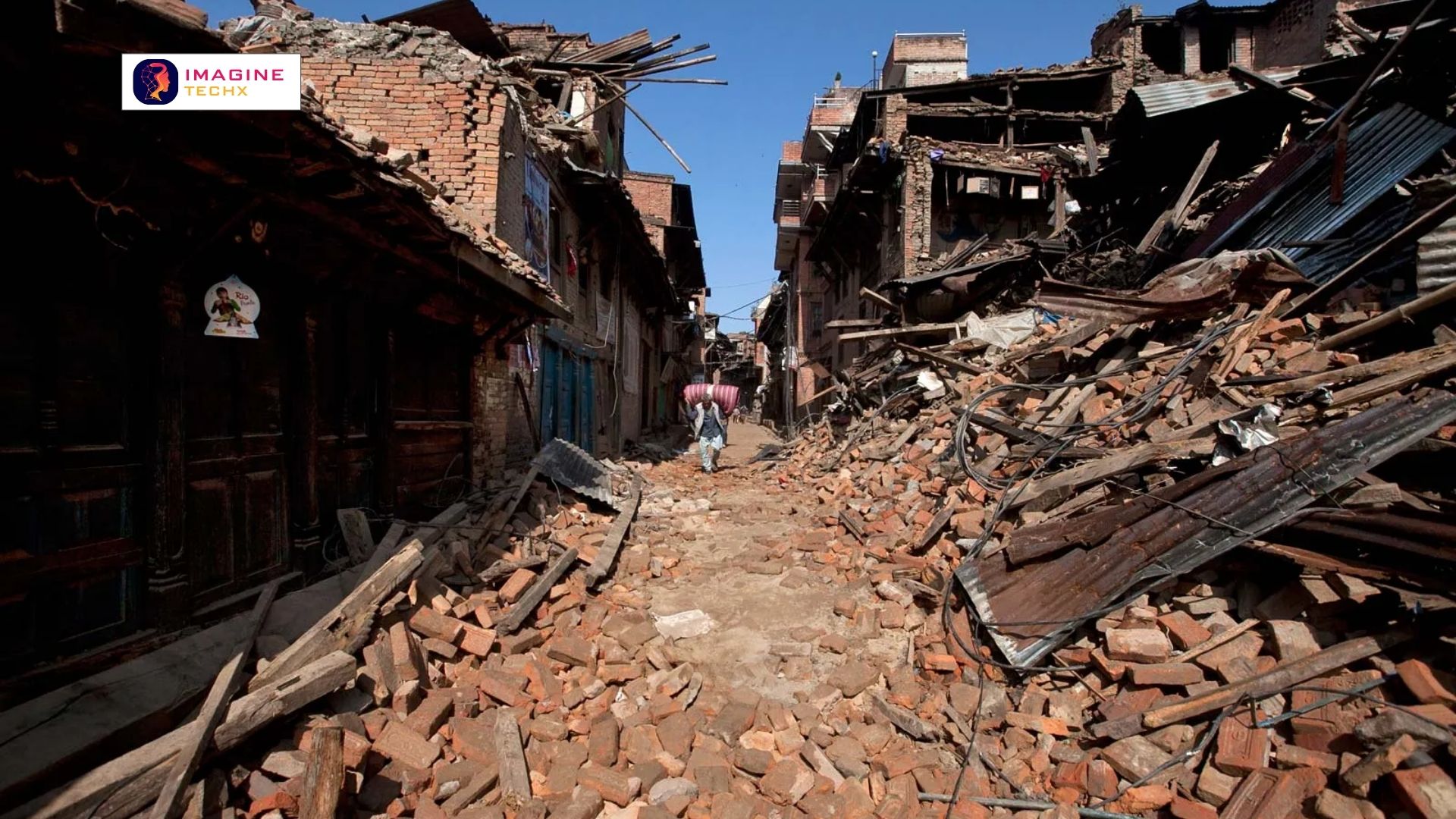Nepal Earthquake: 6.4 magnitude tremors felt across northern India
 Introduction:
Introduction:
In the dead of the night, once more Nepal Earthquake, sending shockwaves across northern India. The unsettling tremors, originating from the heart of the Himalayas, serve as a grim reminder of the seismic vulnerability of this region. On this fateful Friday night, a 6.4 magnitude earthquake struck Nepal’s Lamidanda area in the Jajarkot district. It’s a déjà vu for the residents of this geologically active zone, as this is the third significant earthquake to rock Nepal in just a month. Moreover, these tremors were not confined to Nepal alone; they were felt across the vast expanse of the Delhi-National Capital Region (NCR) and several other northern Indian cities.
Understanding the Nepal Earthquake:
The Nepal earthquake, which struck on a fateful Friday night, had a magnitude of 6.4 on the Richter scale. It’s important to note that the Richter scale measures the energy released by an earthquake, and a magnitude of 6.4 indicates a significant release of energy capable of causing damage, particularly in areas close to the epicenter. The epicenter of this earthquake was located in Nepal’s Lamidanda area, specifically in the Jajarkot district.
The earthquake’s depth, which is a crucial factor in determining its potential impact, was recorded at 10 kilometers below the Earth’s surface. A shallower depth often results in stronger and more destructive earthquakes. At a latitude of 28.84 degrees North and a longitude of 82.19 degrees East, the epicenter was positioned right in the heart of the Himalayas, a region renowned for its seismic activity.
It’s worth mentioning that this earthquake was the third significant one in Nepal in just a month, marking a worrying trend for a region already prone to frequent seismic activity. The frequency of such events raises concerns about the structural integrity of buildings, disaster preparedness, and the overall safety of the people living in these areas.
Tremors Felt Across Northern India:
The earthquake’s impact was not limited to Nepal alone. Tremors were felt across northern India, including the Delhi-NCR region and several other cities, making it a widely experienced event. The timing of the earthquake, occurring at around 11.30 pm, was particularly unsettling, as it caught many people off guard in the middle of the night. The fear and uncertainty associated with nighttime earthquakes only added to the distress.
The Delhi-NCR region, being one of the most densely populated areas in India, was significantly affected by the earthquake. People rushed out of their homes, offices, and apartments in panic. Social media platforms were flooded with videos capturing the shaking buildings and people’s reactions. It was a stark reminder of the importance of earthquake preparedness, especially in urban centers with high-rise buildings.
Impact and Consequences:
The immediate impact of the Nepal earthquake was evident in the form of damaged infrastructure, collapsed buildings, and disrupted communication and transportation networks. Landslides are also a common consequence of earthquakes in hilly and mountainous regions like Nepal. These landslides can further compound the damage and hamper rescue and relief efforts.
The earthquake’s impact can be divided into several key areas:
1. Infrastructure Damage: Many buildings, particularly those not constructed to withstand seismic activity, suffered severe damage. The structural integrity of these buildings was compromised, leading to the collapse of walls and roofs. This has raised concerns about building standards and codes in the affected areas.
2. Casualties and Injuries: Earthquakes often result in casualties and injuries. The exact toll from this earthquake is still being assessed, but initial reports indicate a number of fatalities and injuries. It’s a stark reminder of the potential human cost of seismic events.
3. Disruption of Services: Communication and transportation networks were severely disrupted. Roads and bridges may have sustained damage, making it difficult for rescue and relief teams to reach affected areas. Power outages were also reported in some places.
4. Landslides: In hilly and mountainous regions like Nepal, landslides are a common consequence of earthquakes. These landslides can block roads and further complicate access to affected areas.
You Can Read This Post Also:
Elon Musk Talks to Rishi Sunak About How AI Could Change the Way We Work
The Role of Seismology:
The National Center for Seismology (NCS) plays a crucial role in monitoring and reporting seismic activity in India. It provides real-time data on earthquakes, helping authorities and people in vulnerable areas prepare and respond to seismic events.
The NCS’s ability to determine the depth, magnitude, and epicenter of earthquakes is essential for assessing the potential impact and risk associated with each event. This information guides disaster management efforts, enabling the mobilization of resources and aid to the affected areas more effectively.
Earthquake Preparedness and Mitigation:
The recurring earthquakes in Nepal emphasize the need for earthquake preparedness and mitigation measures in the region. These measures should be comprehensive and involve various stakeholders, including governments, local authorities, and communities. Some key aspects of earthquake preparedness and mitigation include:
1. Building Codes: Enforce and improve building codes to ensure that structures are designed and constructed to withstand seismic activity.
2. Early Warning Systems: Invest in early warning systems that can provide people with a few seconds to minutes of advance notice before strong tremors reach their location.
3. Public Awareness: Educate the public about earthquake preparedness, including what to do during and after an earthquake. Conduct regular drills in schools, workplaces, and communities.
4. Emergency Response: Strengthen emergency response capabilities, including search and rescue teams and medical facilities.
5. Infrastructure Resilience: Retrofit and strengthen critical infrastructure, such as hospitals, schools, and bridges, to enhance their resilience to earthquakes.
6. Land-Use Planning: Implement land-use planning that considers earthquake risk and restricts the construction of critical facilities in high-risk zones.
Conclusion:
The recent Nepal earthquake, with its strong tremors felt across northern India, serves as a poignant reminder of the seismic vulnerability of the Himalayan region. As the earth continues to shift beneath our feet, it is imperative that governments, communities, and individuals work together to mitigate the potential impact of future seismic events. Earthquake preparedness, better building standards, early warning systems, and effective emergency response are all part of the solution. With concerted efforts and a commitment to safety, we can reduce the human and economic toll of earthquakes in this seismically active zone.






